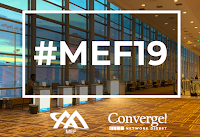Surging 5G NR demand propelled the RAN market in 3Q 2019 to a fifth consecutive quarter of year-over-year (Y/Y) growth for the first time in over a decade, according to Dell’Oro Group.

“The positive momentum that has characterized this market since the upswing began in the second half of 2018 extended into 3Q 2019, underpinned by a 5G ramp that is accelerating at an extraordinary pace,” said Stefan Pongratz, Analyst and Vice President at Dell’Oro Group. “While mid-band Massive MIMO continues to drive the lion share of the 5G capex, both low-band and Millimeter Wave (mmW) 5G NR deployments accelerated significantly in the quarter,” continued Pongratz.
Additional highlights from the 3Q 2019 RAN report:

“The positive momentum that has characterized this market since the upswing began in the second half of 2018 extended into 3Q 2019, underpinned by a 5G ramp that is accelerating at an extraordinary pace,” said Stefan Pongratz, Analyst and Vice President at Dell’Oro Group. “While mid-band Massive MIMO continues to drive the lion share of the 5G capex, both low-band and Millimeter Wave (mmW) 5G NR deployments accelerated significantly in the quarter,” continued Pongratz.
Additional highlights from the 3Q 2019 RAN report:
- The broad-based pickup in RAN revenues was reflected in shipment trends, with total BTS shipments—macro and small cell—advancing at a double-digit pace year-to-date (1Q19 through 3Q19).
- Aggregate growth for RAN systems using advanced antenna systems—including sub 6 GHz Massive MIMO and mmW—accelerated in the third quarter, accounting for 10 to 20 percent of the year-to-date RAN revenues.
- RAN revenue rankings for the top three vendors—Huawei, Ericsson, and Nokia—were stable in the quarter and for the year-to-date period.


















































